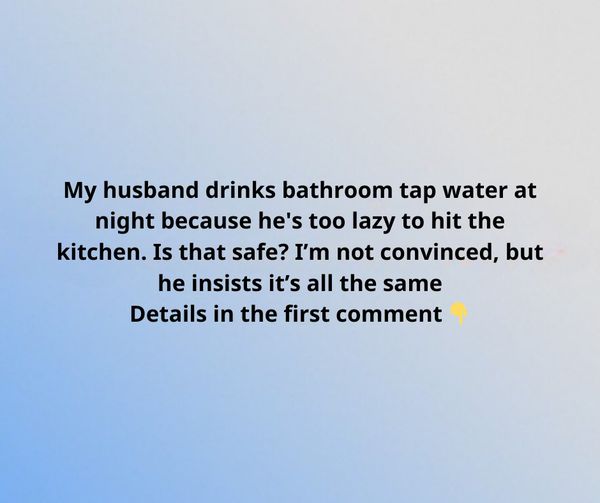Many people turn to the closest water source when thirst strikes at night, but is drinking from the bathroom tap safe? For those wondering if it’s really the same as kitchen tap water, here’s an in-depth look at the potential concerns, risks, and tips for ensuring your nighttime hydration is as safe as possible.
Why Some Choose Bathroom Tap Water
In the middle of the night, the bathroom is often closer than the kitchen, making it the convenient choice for a quick drink. But while it’s practical, bathroom tap water may differ from kitchen water in quality, depending on your home’s plumbing setup and maintenance practices.
Key Concerns with Bathroom Tap Water
Several factors can impact bathroom water quality:
-
- Stagnation in Pipes
Bathroom taps, used less frequently than kitchen ones, can harbor stagnant water, especially overnight. This stagnation allows the buildup of bacteria, rust, or even lead, which can compromise water quality. - Differences in Filtration
Kitchens often have water filters, but bathrooms may not. If your kitchen has a water filter system, the water there is generally safer for drinking compared to an unfiltered bathroom faucet. - Aging Bathroom Pipes
Older plumbing, often found in bathrooms, may leach contaminants like lead. Pipes that corrode over time can further affect the water quality.
- Stagnation in Pipes
- Maintenance and Cleanliness
Kitchen fixtures tend to be cleaned and maintained more often than bathroom faucets, which can accumulate grime and bacteria over time, adding to the risks.
Making Bathroom Water Safer
If you or a family member frequently drink bathroom tap water at night, here are practical steps to improve safety:
-
- Inspect Plumbing Regularly
Regular plumbing inspections can identify issues like rust and leaks. Fixing these problems can reduce the risk of contaminants entering your water.
- Inspect Plumbing Regularly
-
- Install a Bathroom Faucet Filter
While these filters may not be as robust as kitchen units, they can help remove basic impurities. This can be particularly helpful in older homes with dated plumbing. - Use a Water Test Kit
A water test kit can provide quick insights into potential contaminants, like chlorine or bacteria, in your bathroom tap water. If levels are high, it’s best to avoid drinking from that tap until the issue is resolved. - Keep Filtered Water by Your Bed
If bathroom tap water isn’t ideal, keep a bottle of filtered water by your bedside. This way, you can quench your thirst without worrying about contaminants.
- Install a Bathroom Faucet Filter
When to Avoid Bathroom Tap Water
There are situations when it’s best to skip bathroom water:
-
- If the water is discolored or has an unusual smell.
- If plumbing has visible corrosion or is particularly old.
- If water tests indicate contaminants like lead or bacteria.
While in some areas both kitchen and bathroom taps draw from the same source, factors like pipe age, maintenance frequency, and filtration systems can affect water quality, making it wiser to avoid bathroom tap water if you have concerns.
Final Thoughts: Making Safer Choices
While reaching for the bathroom tap is convenient, being mindful of potential contaminants is important. Ensuring water quality through regular testing, filtering, and maintenance can make it safer. For peace of mind, opting for filtered water in the kitchen or by your bed is often the better choice.

